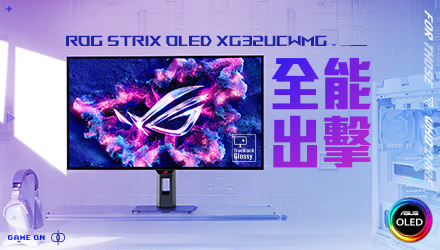
據 Wccftech 表示,Intel 現在已經將未正式發佈的聲明提供給媒體,內容稱這次事件,可能跟 CPU 處於超出規格的操作條件有關,導致在高溫下持續出現高電壓和高頻率,最終讓 CPU 產生不穩定現象。
Intel 發現 13 / 14 代 CPU 穩定性問題來自於非預設值運作
以下是 Wccftech 公佈的 Intel 聲明原文:
Intel has observed that this issue may be related to out-of-specification operating conditions resulting in sustained high voltage and frequency during periods of elevated heat.
Analysis of affected processors shows some parts experience shifts in minimum operating voltages which may be related to operation outside of Intel specified operating conditions.
While the root cause has not yet been identified, Intel has observed the majority of reports of this issue are from users with unlocked/overclock capable motherboards.
Intel has observed 600/700 Series chipset boards often set BIOS defaults to disable thermal and power delivery safeguards designed to limit processor exposure to sustained periods of high voltage and frequency, for example:
– Disabling Current Excursion Protection (CEP)
– Enabling the IccMax Unlimited bit
– Disabling Thermal Velocity Boost (TVB) and/or Enhanced Thermal Velocity Boost (eTVB)
– Additional settings which may increase the risk of system instability:
– Disabling C-states
– Using Windows Ultimate Performance mode
– Increasing PL1 and PL2 beyond Intel recommended limits
Intel requests system and motherboard manufacturers to provide end users with a default BIOS profile that matches Intel recommended settings.Intel strongly recommends customer’s default BIOS settings should ensure operation within Intel’s recommended settings.
In addition, Intel strongly recommends motherboard manufacturers to implement warnings for end users alerting them to any unlocked or overclocking feature usage.
Intel is continuing to actively investigate this issue to determine the root cause and will provide additional updates as relevant information becomes available.Intel will be publishing a public statement regarding issue status and Intel recommended BIOS setting recommendations targeted for May 2024.
來自先進 GPT-4 的 Copilot 翻譯版本:
Intel 觀察到,這個問題可能與規格外的操作條件有關,導致在高溫期間持續出現高電壓和高頻率。
受影響處理器的分析顯示,一部分在最小操作電壓上出現變化,這可能與超出 Intel 規定的操作條件有關。
雖然根本原因尚未被確定,但 Intel 觀察到,報告此問題的大多數使用者都是使用有解鎖 / 超頻能力的主機板。
Intel 觀察到,600/700 系列晶片組主機板經常設定 BIOS 預設值,以停用旨在限制處理器暴露於持續高電壓和高頻率的熱和電源傳遞保護,例如:
- 停用 Current Excursion Protection (CEP)。
- 啟用 IccMax Unlimited bit。
- 停用 Thermal Velocity Boost (TVB) 和/或 Enhanced Thermal Velocity Boost (eTVB)。
- 可能增加系統不穩定風險的其他設定:
- 停用 C-states。
- 使用 Windows 終極效能電源模式。
- 將 PL1 和 PL2 提高到超出 Intel 建議的限制。
Intel 要求系統和主機板製造商為最終使用者,提供一個符合 Intel 建議設定的預設 BIOS 設定檔。
- Intel 強烈建議,客戶的預設 BIOS 設定,應確保在 Intel 的建議設定內運作。
- 此外,Intel 強烈建議主機板製造商為最終使用者實施警告,提醒他們任何解鎖或超頻功能的使用。
Intel 正在積極調查此問題以確定根本原因,並將在相關資訊可用時提供額外的更新。
Intel 將在 2024 年 5 月針對問題狀態,和 Intel 建議的 BIOS 設定推薦,發布公開聲明。
Wccftech 指出,這些設定通常在主機板上預設為啟用,解決問題的唯一方法是手動調整設定,或簡單的對 CPU 進行降壓 / 降頻。但無論哪種方式都會導致 CPU 性能下降。不過進行調整是必要的,因為 CPU 長期以超出預定規格的參數運作,最終會導致嚴重的矽退化,產生更多問題,例如 BSOD (藍底白字)、無法打開任何應用程式以及 I/O、DRAM 問題。
現在主機板製造商終於開始透過加入新的「Intel BaseLine」BIOS 選項,來解決這些問題。例如華碩和技嘉已經推出了新的 BIOS,微星也提供 BIOS 設定指南,以緩解 Intel 第 13 代和第 14 代未鎖頻 CPU 上的穩定性問題,而其他主機板製造商也將陸續提供他們的解決方案。
目前 Intel 還在調查詳細的原因,預計 5 月會公佈結果跟建議的 BIOS 設定。筆者建議 Intel 第 13 代和第 14 代未鎖頻 CPU 的使用者,先到主機板官網看看有沒有新的 BIOS 可以用,記得更新完要手動套用 Intel BaseLine 設定檔,沒有的話也可以參考已公開的 Intel BaseLine 設定檔去調整。雖然使用後效能可能會小幅降低,但總比出現不穩定的狀況好。
延伸閱讀
實測發現套用 Intel Baseline Profile 設定後,Core i9-14900K 效能降低約 8 ~ 9%
MSI 發布 BIOS 設定指南,改善 Intel Core i9-13900K 和 Core i9-14900K 遊戲穩定性
















很可惜的是 MB廠找出來的問題是
Intel的cep 功能會維持高電壓 以保證cpu工作正常
關閉他才能恢復一點穩定性,但還有其他因素會影響
CEP跟電壓無關 , 別再以訛傳訛了
開關CEP造成的電壓行為是板廠額外調整的